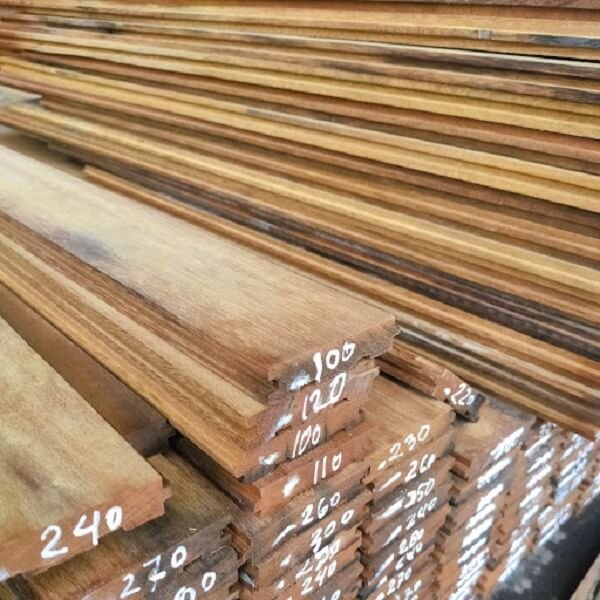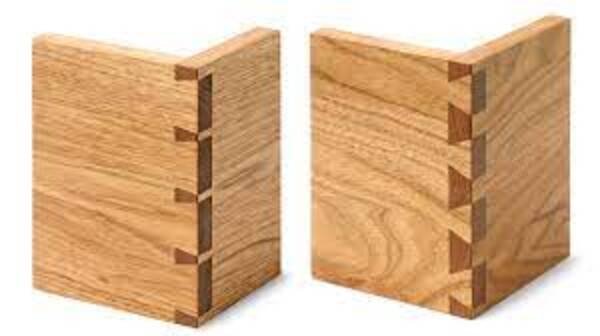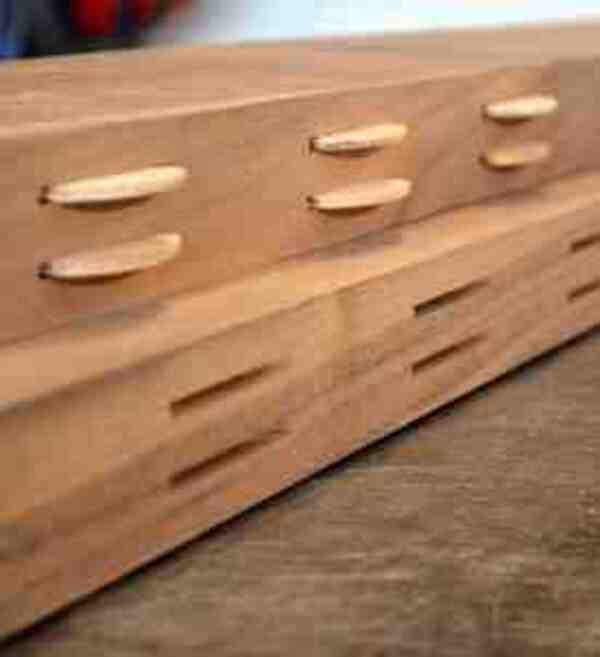Woodworking joinery refers to the process of joining two or more pieces of wood together to create a seamless and durable surface. Joinery techniques vary depending on the type of wood used of course, with the density of the wood, be it hardwood or softwood, will affect what you will do. This has also to do with the type of machinery you have. Some common joinery techniques include tongue-and-groove, butt joint, and many more.
Proper woodworking joinery is essential for ensuring a long-lasting and aesthetically pleasing flooring or furniture, depending on what kind of project you are undertaking. It requires precision, attention to detail, and specialised tools and equipment. Professional woodworkers (like Kaltimber of course!) are skilled in the art of joinery and can ensure that your flooring or furniture are made correctly and to the highest standards.
Tongue “and” Groove:
This technique involves interlocking boards with a protruding tongue on one edge and a matching groove on the other. This creates a tight, interlocking joint that is ideal for hardwood flooring.
Tongue and groove flooring is a popular type of hardwood flooring that uses a specialized joinery technique to secure the individual boards together. This technique involves cutting a protruding "tongue" on one edge of each board and a matching groove on the other edge. The tongue on one board is then inserted into the groove on the next board, creating a secure, interlocking joint that prevents the boards from shifting or separating over time.
Tongue and groove flooring is commonly used in both solid and engineered hardwood flooring installations. The interlocking joint provides stability and strength to the floor, making it less prone to warping or shifting. It also provides a smooth and level surface that is easy to install and maintain.
Contact us for your flooring options!
To install tongue and groove flooring, the first row of boards is typically installed with the groove facing the wall. Subsequent rows of boards are then installed by inserting the tongue of each board into the groove of the previous board, and then nailing or stapling the board into place.
One advantage of tongue and groove flooring is that it can be sanded and refinished multiple times, allowing the floor to be refreshed and restored to its original beauty over time. It is also a popular choice for DIY flooring projects because it is relatively easy to install, and requires no specialized equipment or tools.
Butt Joint:
A butt joint is a simple technique where two boards are joined end-to-end with no overlapping or interlocking. It is a popular technique for installing flooring and is often used when installing engineered wood or laminate flooring.
To create a butt joint, the first board is cut to the appropriate length and then the second board is butted up against it. The two boards are then secured together using an adhesive or nails. This creates a seam between the two boards that is not as strong as some of the other flooring joinery techniques, so it's important to ensure that the subfloor is level and free of any bumps or imperfections that could cause the boards to separate over time.
One advantage of using a butt joint is that it is a simple technique that can be completed quickly. It is also a good option for DIY projects because it doesn't require any advanced woodworking skills. However, if you are installing solid hardwood flooring, it's generally recommended to use a more secure joinery technique like tongue and groove or a floating floor installation method.
Dovetail Joint:
This is a more advanced technique where the boards are cut with interlocking, angled edges. This creates a strong joint that is ideal for heavy-duty flooring.
While dovetail joints are not commonly used in flooring installations, they can be used for specialised applications, such as in heavy-duty or high-traffic areas where maximum strength and durability are required. Dovetail joints are typically used in woodworking to join two pieces of wood together at a right angle, such as in drawers or cabinets, and are known for their interlocking design that provides excellent strength and resistance to pulling forces.
In a dovetail joint, a series of angled cuts are made into the end of one board, creating a series of trapezoidal-shaped "pins." These pins are then interlocked with a corresponding series of trapezoidal-shaped "tails" cut into the end of the mating board, creating a tight-fitting joint that resists pulling apart.
To create dovetail joint flooring, specialized milling equipment is required to cut the dovetail shapes into the ends of the boards. This is a time-consuming and labour-intensive process, and is generally only used in high-end or custom flooring installations. Dovetail joint flooring can provide a unique and aesthetically pleasing look, but it is not a common or practical option for most flooring installations.
Biscuit Joint:
Biscuit joint flooring is a type of joinery that uses oval-shaped wooden or plastic biscuits to secure two pieces of flooring together.
The biscuits are typically made of compressed wood or particleboard, and are inserted into matching slots that have been cut into the edge of each board. When the two boards are pressed together, the biscuits expand, creating a tight, secure joint.
Biscuit joints are often used in engineered hardwood flooring installations, where the individual boards are thinner and more prone to movement than solid hardwood flooring. The biscuits help to stabilise the boards and prevent them from shifting or separating over time.
To create biscuit joints in a flooring installation, a biscuit joiner or plate joiner is used to cut matching slots into the edges of each board. The biscuits are then inserted into the slots and the boards are joined together, either by glueing or nailing them into place.
Biscuit joint flooring has several advantages. It is a relatively simple and fast installation method, and it can be used to join boards of different sizes or materials. It also provides a strong and stable joint that is less prone to movement or separation than some other types of joinery. However, it may not be as strong or durable as other joinery techniques, such as mortise and tenon or tongue and groove, and it may not be suitable for high-traffic or heavy-duty applications.
Mortise and Tenon Joint:
Mortise and tenon joints are a traditional joinery technique that can be used in flooring installations. This technique involves one board having a rectangular hole (mortise) and the other board having a matching rectangular protrusion (tenon). The tenon is then inserted into the mortise, creating a strong, interlocking joint that is resistant to twisting and separating.
In flooring installations, mortise and tenon joints can be used to join individual boards of hardwood flooring together, creating a more stable and durable floor. This technique is commonly used in wide plank flooring installations, where individual boards are often wider and more prone to movement than narrower boards. Mortise and tenon joints help to stabilise the boards and prevent them from warping, twisting or separating over time.
Creating a mortise and tenon joint in a flooring installation involves milling the boards to precise measurements to ensure that the tenons fit snugly into the mortises. This is a precise and labour-intensive process that requires specialised equipment and expertise. Mortise and tenon joint flooring is often more expensive than other flooring options, but it can provide a beautiful and durable floor that will last for many years.








